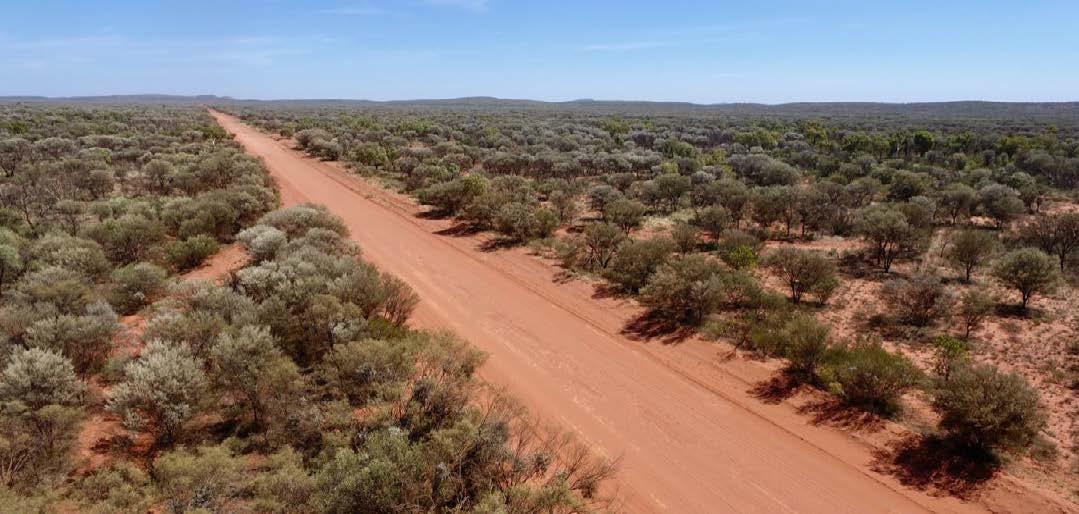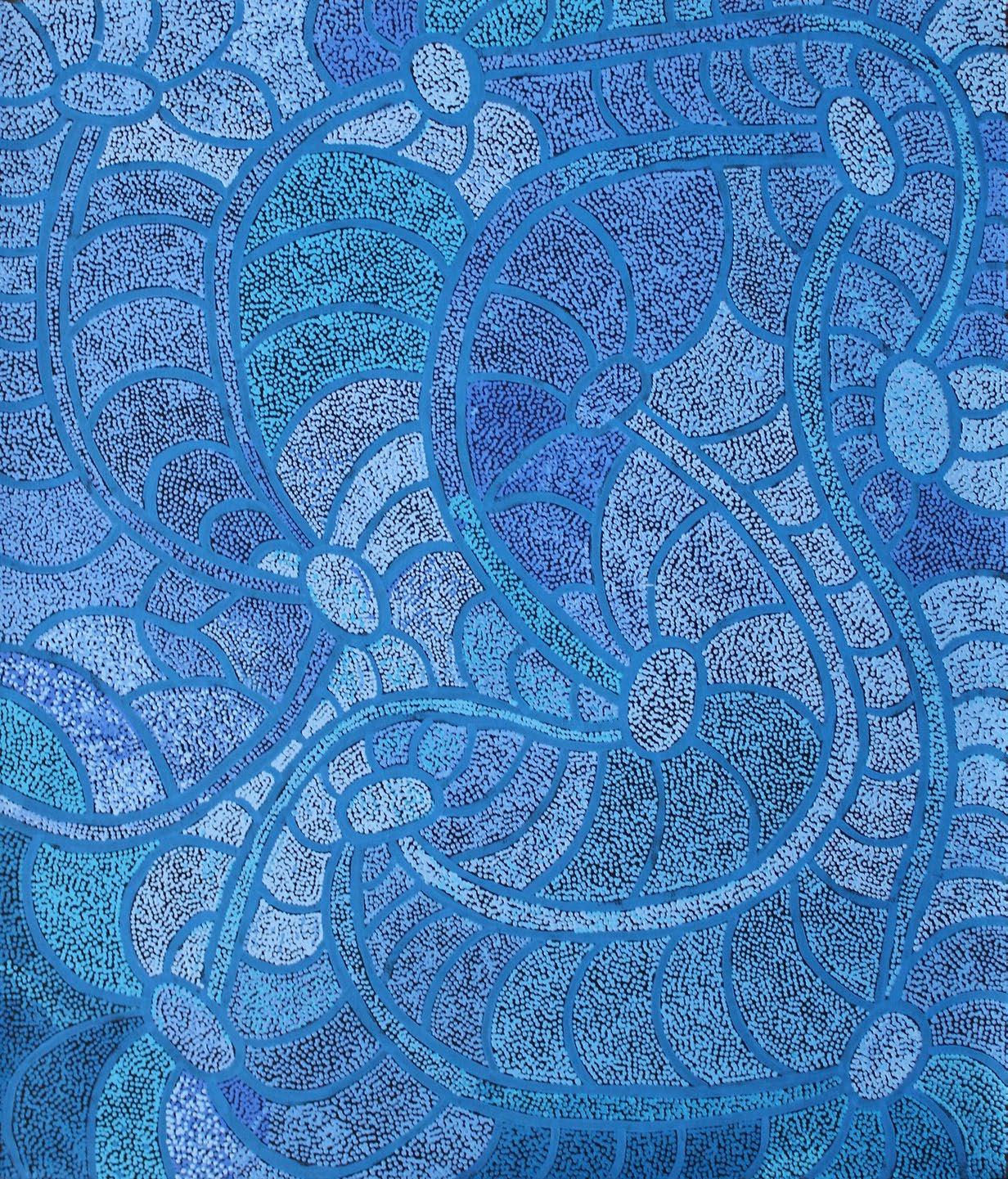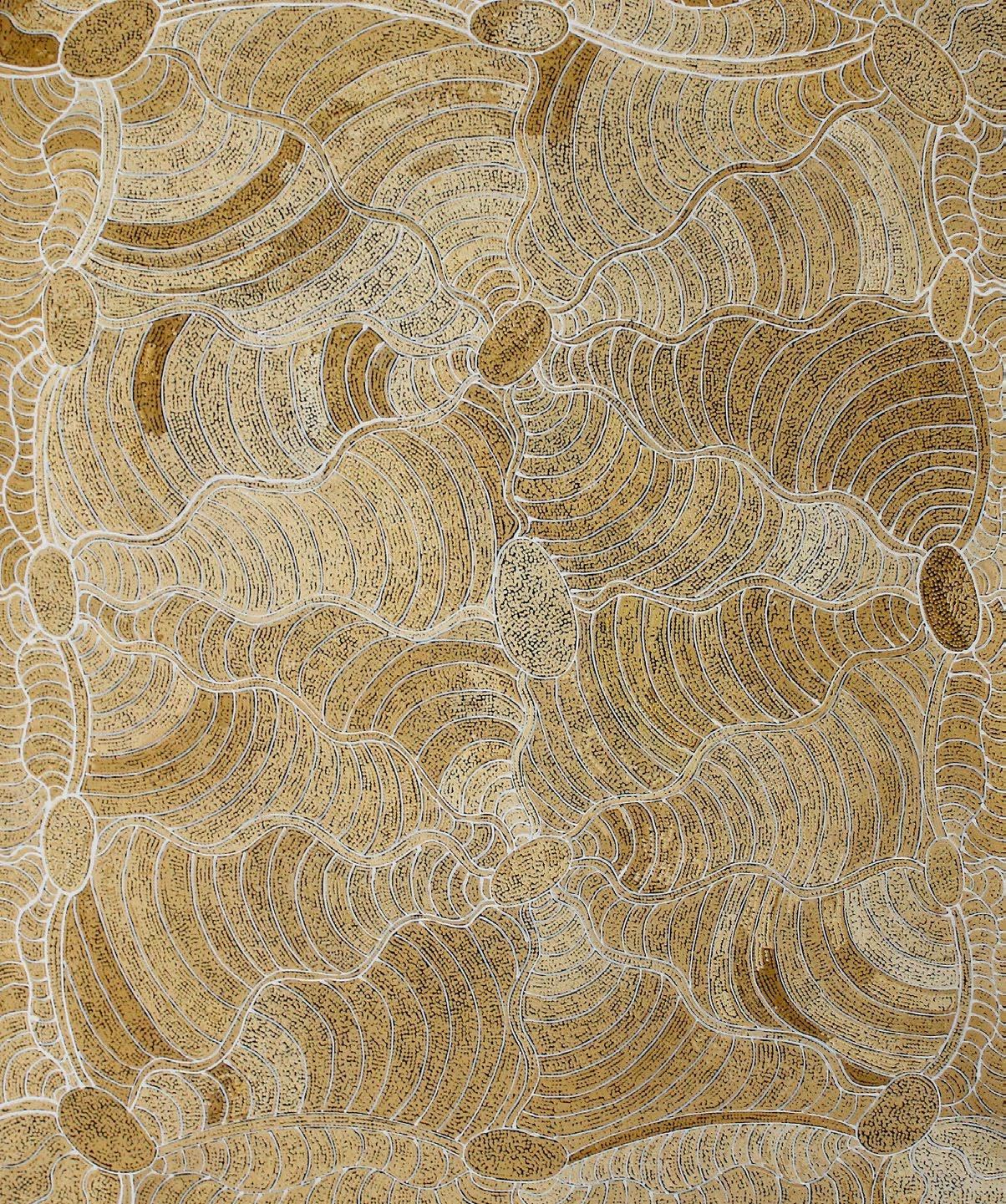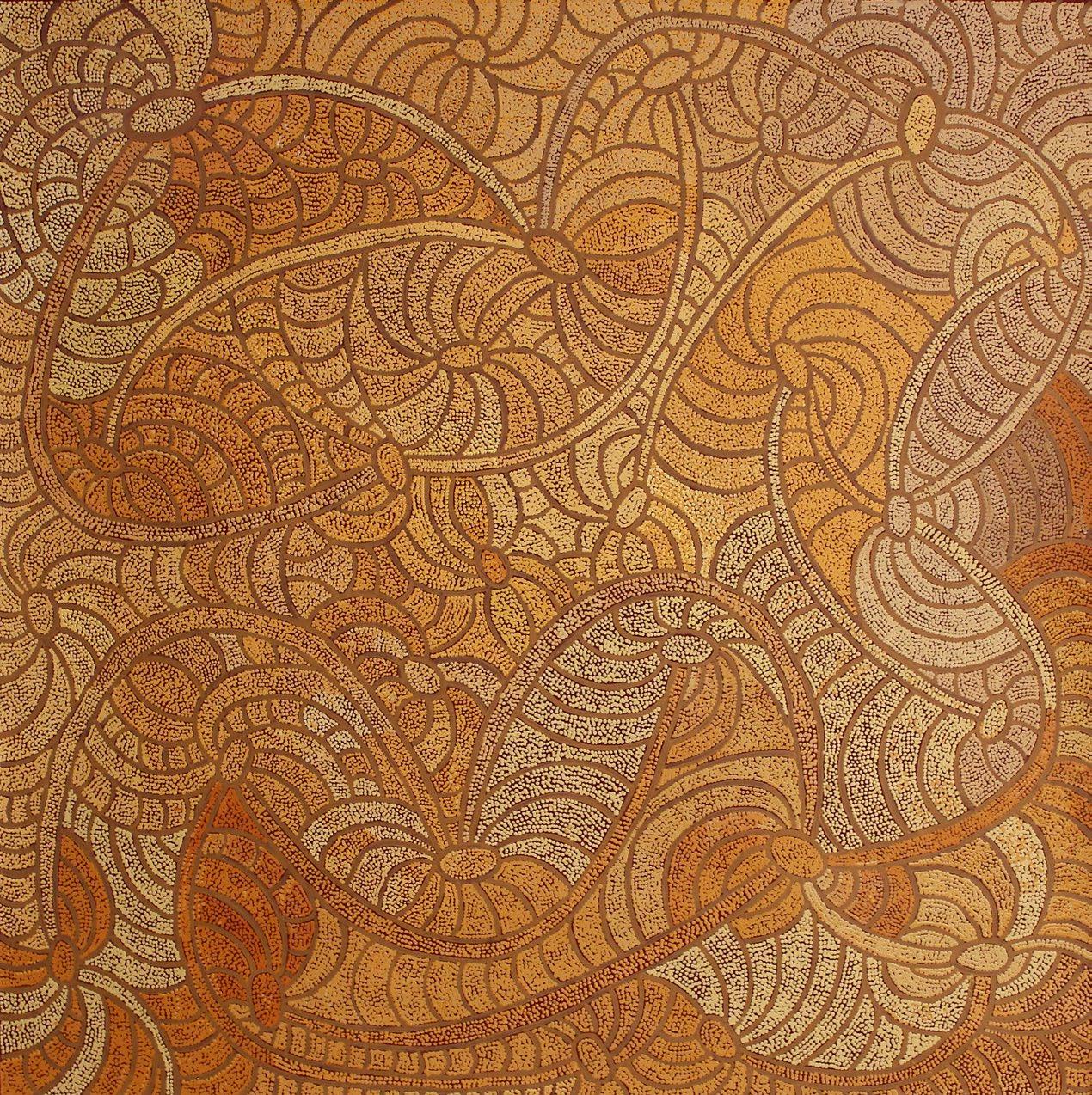
1 minute read
JUDITH NUNGARRAYI MARTIN
Judith has been painting with the Warlukurlangu Artists Aboriginal Corporation, since 1994.
As a young child she would watch her family paint and listen to their stories.
Advertisement
Although her production of artwork was initially sporadic – she began to paint full time when she had her sons and daughter. “I wanted to paint the stories to teach my kids”.
Judith Nungarrayi Martin, a Warlpiri woman, was born in 1976 in Alice Springs Hospital, the closest hospital to Yuendumu, a remote Aboriginal community 290 km north-west of Alice Springs. Judith comes from a family of artists. Her mother is Helen Nampijinpa Robertson and her grandfather was the famous ‘rain dreaming’ painter, Shorty Jangala Robertson. Judith attended the local school in Yuendumu before studying at Yirara College, an Aboriginal boarding College in Alice Springs. When she finished school, she returned to Yuendumu and moved to Nyrripi in 1991 where she married a ‘Nyrripi boy’. They have 3 sons and 1 daughter.
Judith paints her father’s Jukurrpa (Dreamings), that include Janganpa Jukurrpa (Brush Tail Possum Dreaming) and Yankirri Jukurrpa (Emu Dreaming). These Dreamings have been passed down through the generations for millennia and relate directly to the land, its features and the animals and plants that inhabit it. She has exhibited in group exhibitions in Melbourne, Sydney nd Japan.
Judith uses an unrestricted palette to develop a modern interpretation of her traditional culture.
The subjects of Judith’s paintings here are all Janganpa Jukurrpa (common brush-tail possum Dreaming – a creation story that traverses thousands of kilometres of Warlpiri country in the Tanami Desert of NT and WA. Janganpa are nocturnal animals that often nest in the hollows of white gum trees (or ‘wapunungka’).
This story comes from a big hill called Mawurrji, west of Yuendumu and north of Pikilyi (Vaughan Springs) on the edge of Lake Mackay. A group of ‘janganpa’ ancestors resided there. Every night they would go out in search of food. Their hunting trips took them to Wirlki and Wanapirdi, where they found ‘pamapardu’ (flying ants).

They journeyed on to Ngarlkirdipini looking for water. A Nampijinpa woman was living at Mawurrji with her two daughters.
She gave her daughters in marriage to a Jupurrurla ‘janganpa’ but later decided to run away with them. The Jupurrurla angrily pursued the women. He tracked them to Mawurrji where he killed them with a stone axe. Their bodies are now rocks at this place. Warlpiri people perform a young mens initiation ceremony, which involves the Janganpa Jukurrpa. The Janganpa Jukurrpa belongs to Jakamarra/Jupurrurla men and Nakamarra/Napurrurla women.
In Warlpiri paintings traditional iconography is used to represent this Jukurrpa. ‘Janganpa’ tracks are often represented as ‘E’ shaped figures and concentric circles are used to depict the trees in which the ‘janganpa’ live, and also the sites at Mawurrji.










